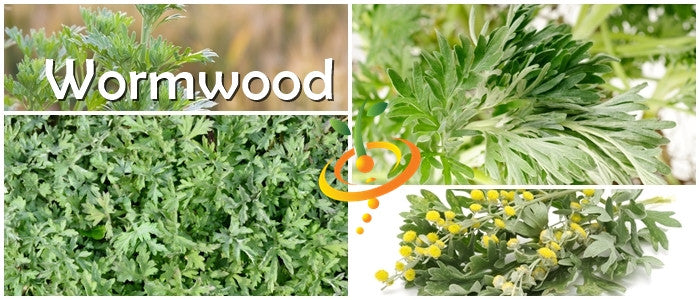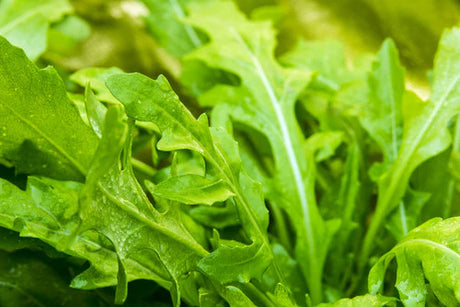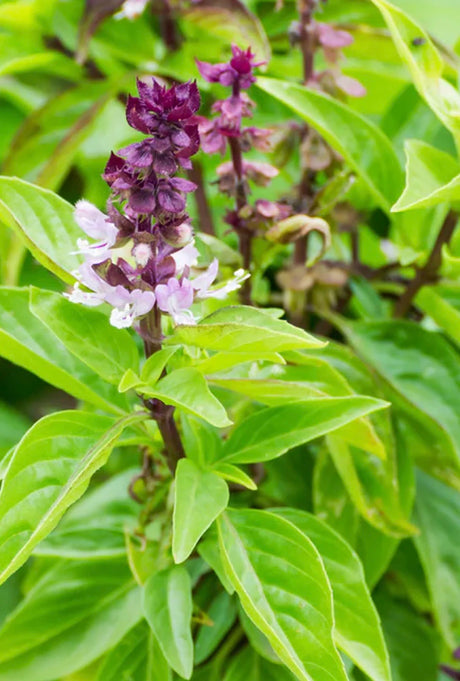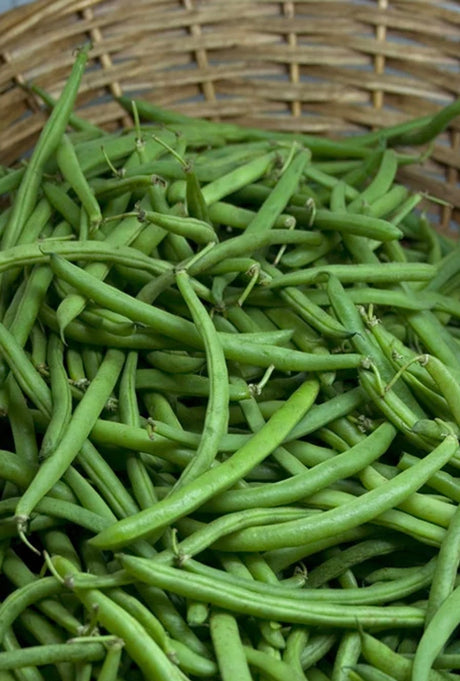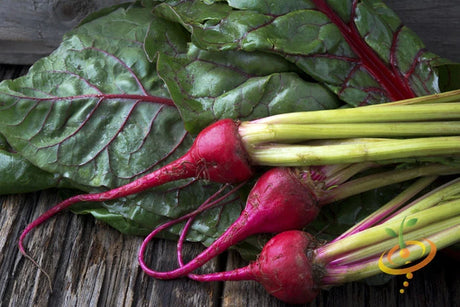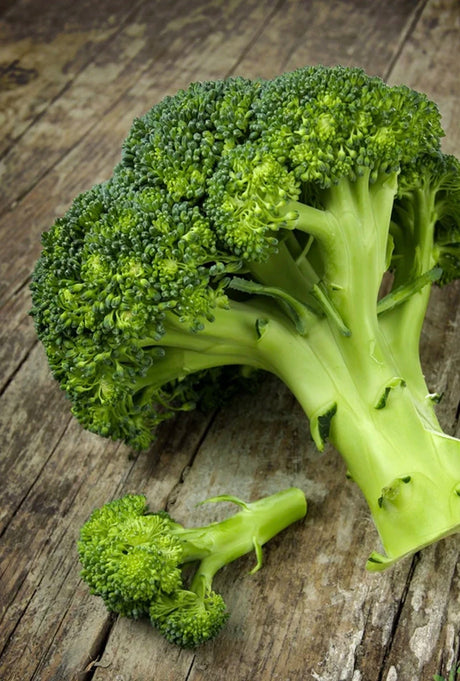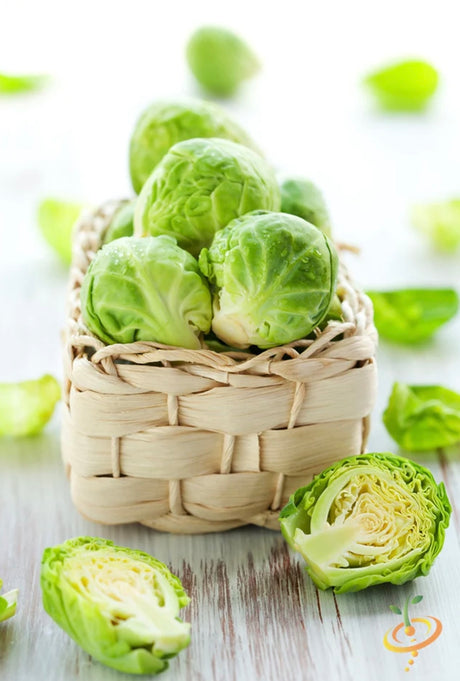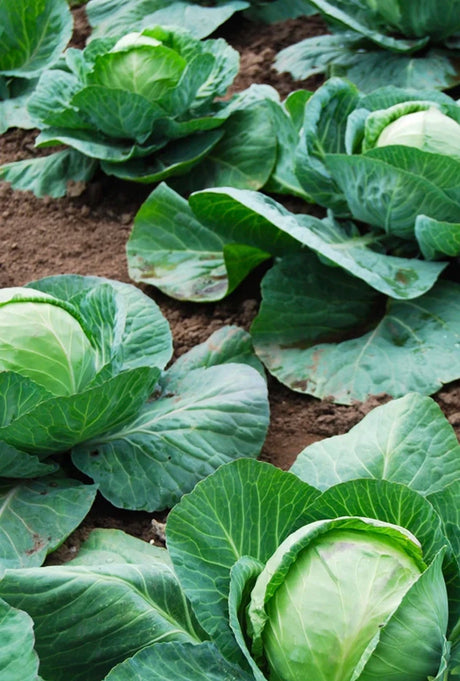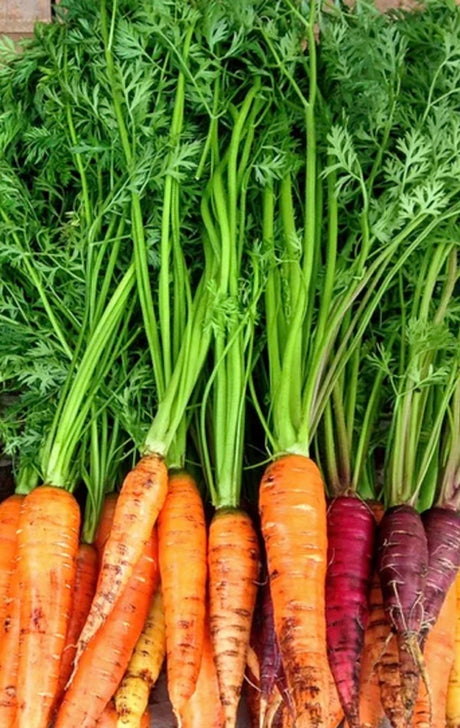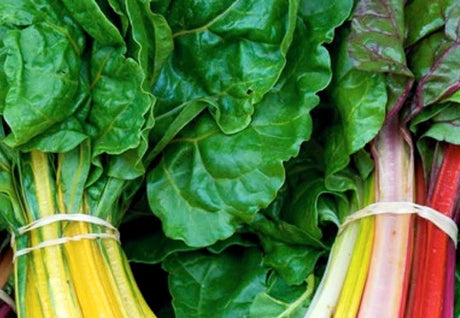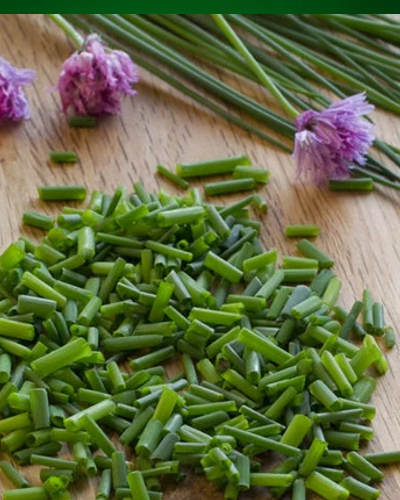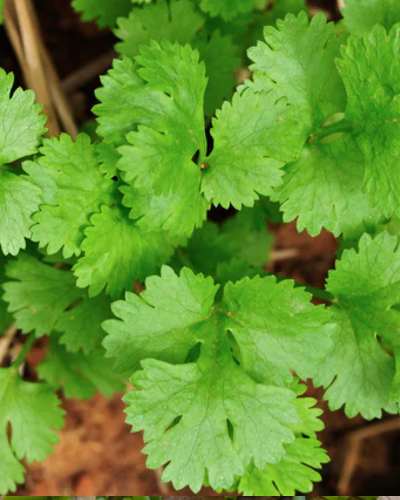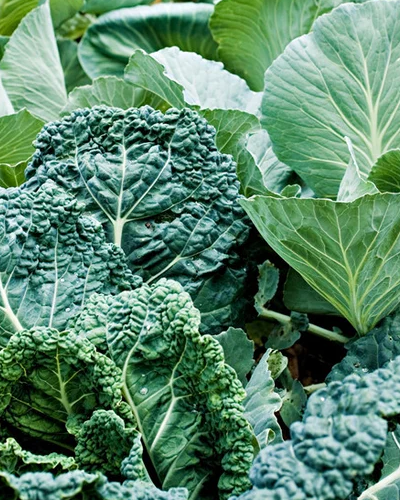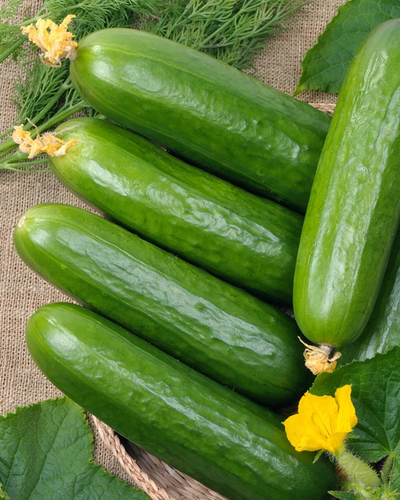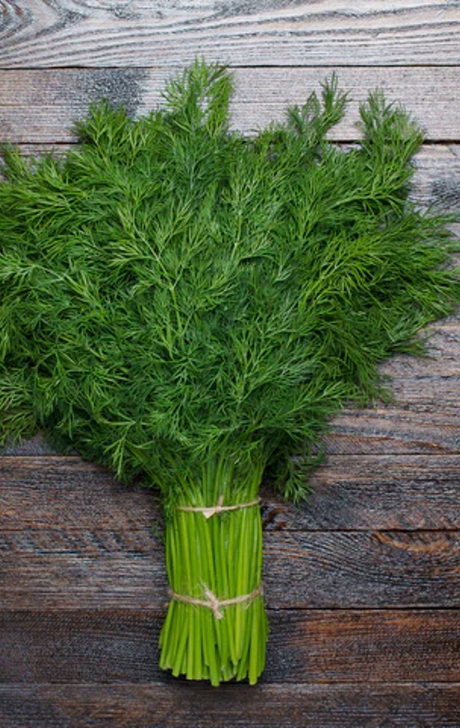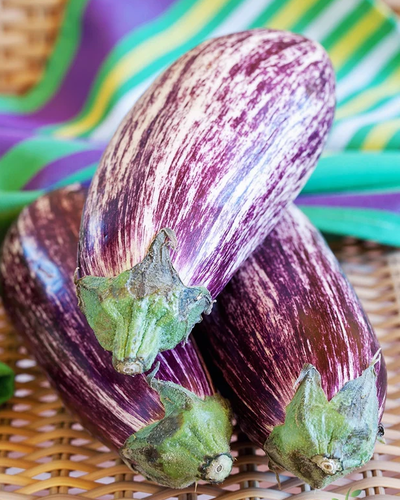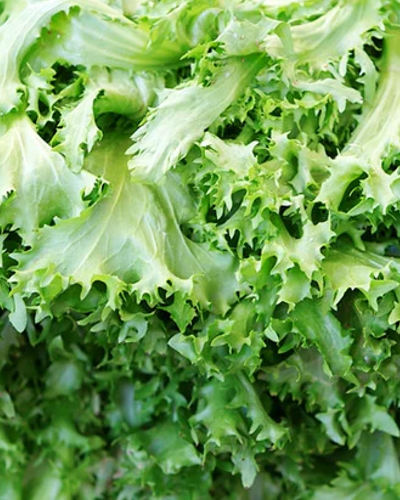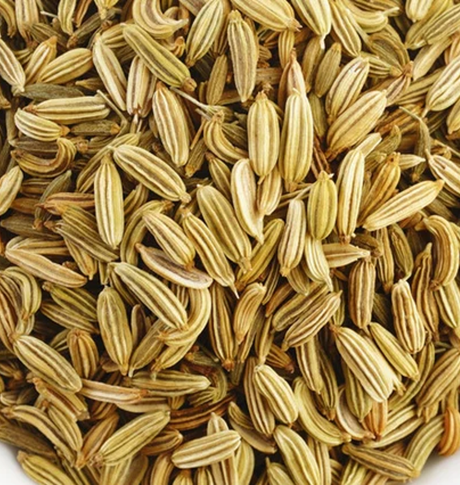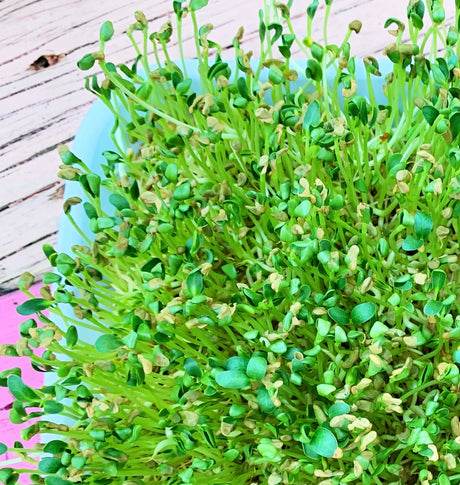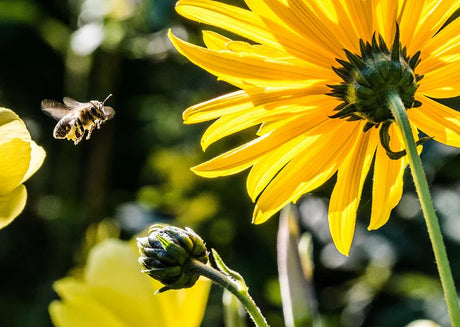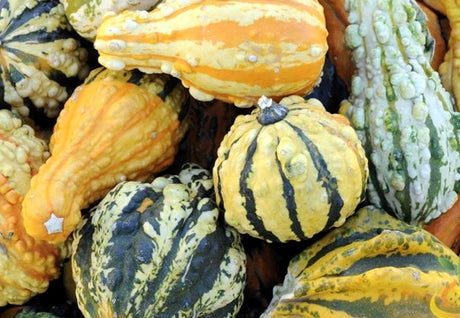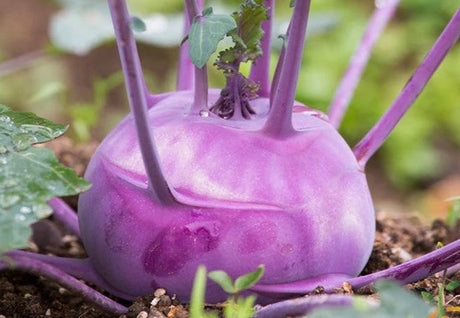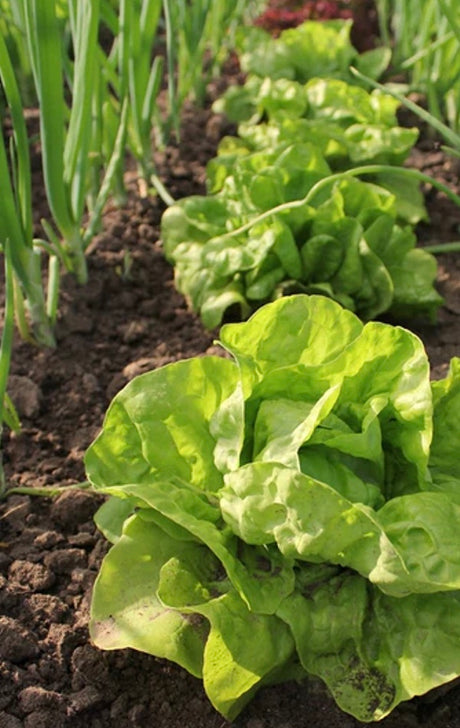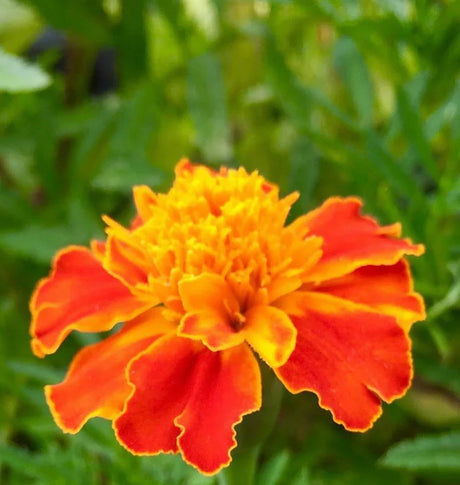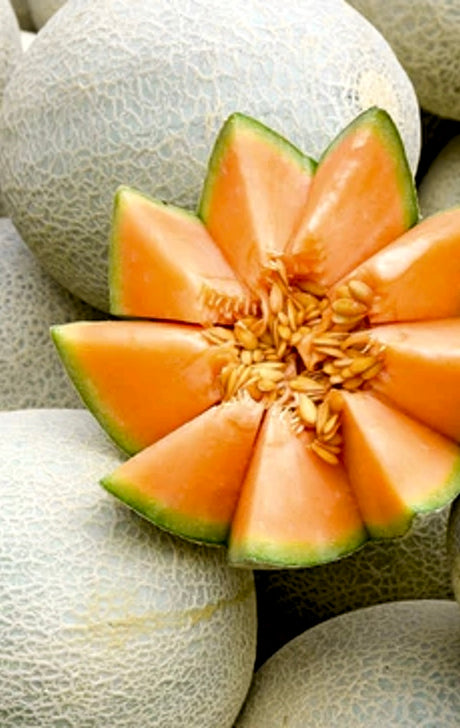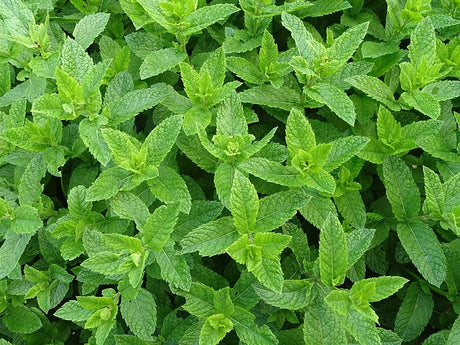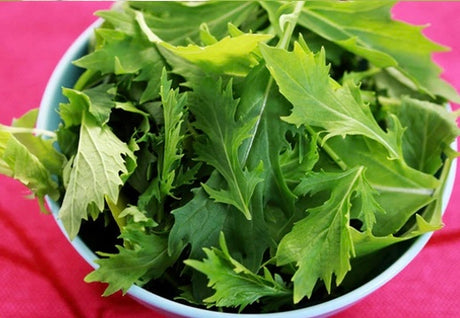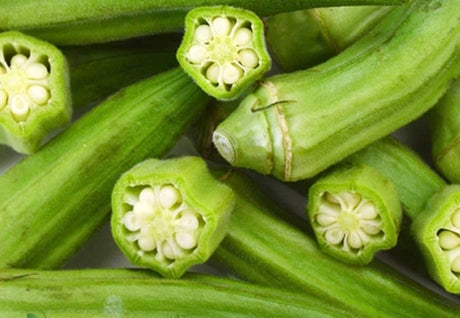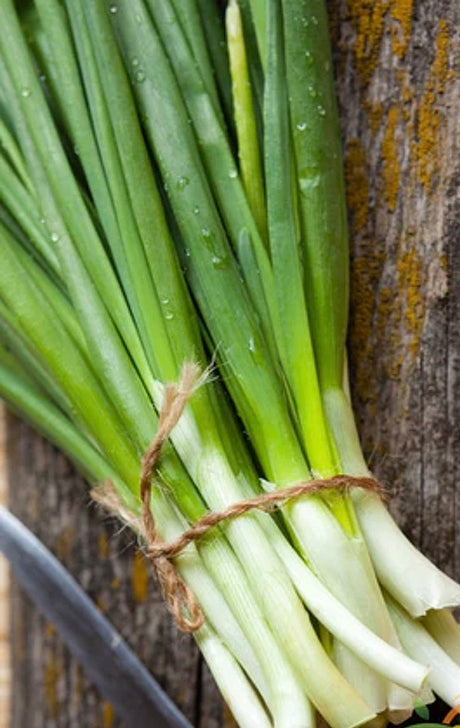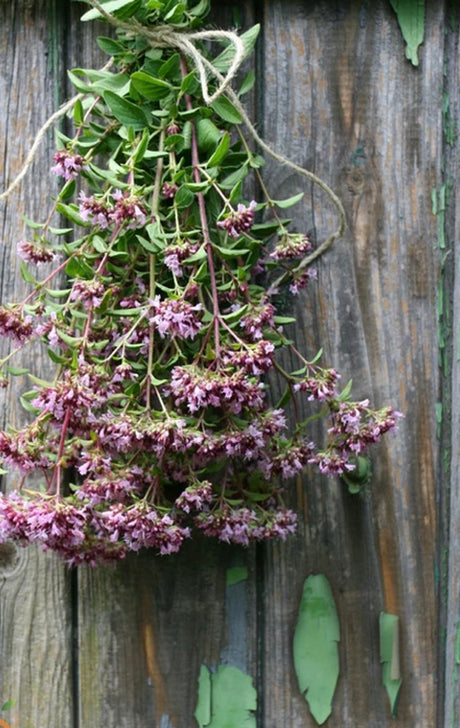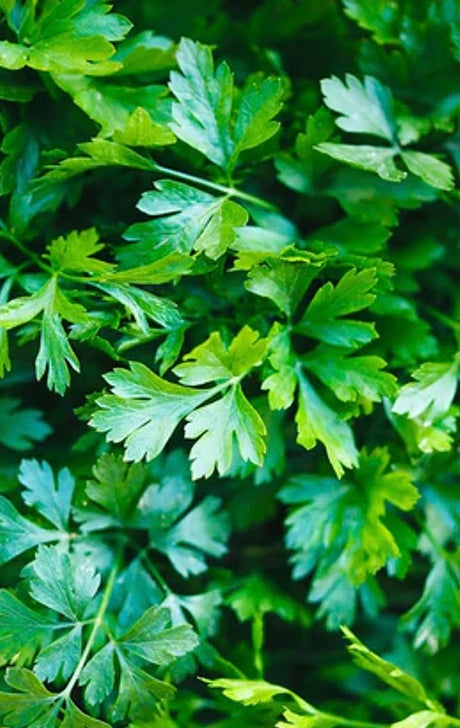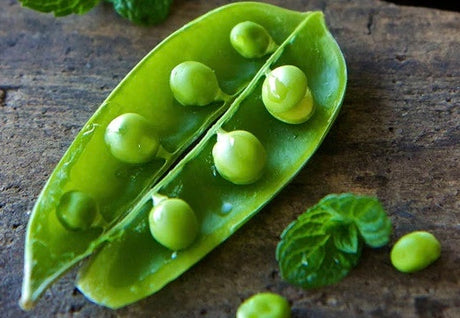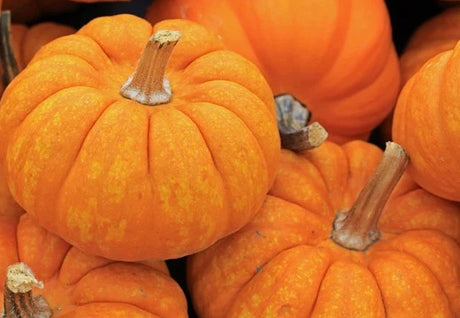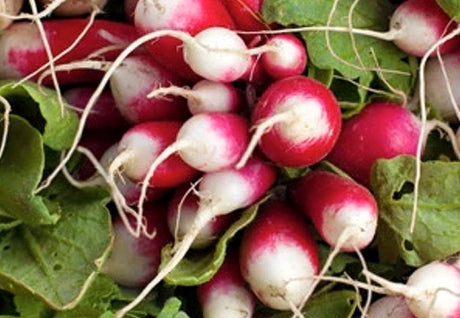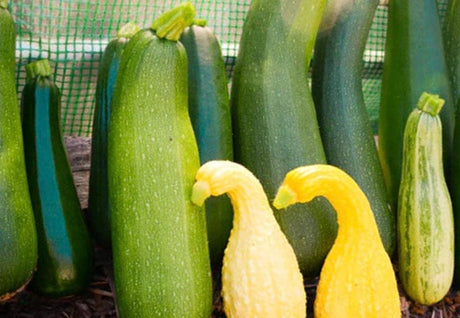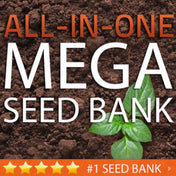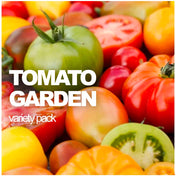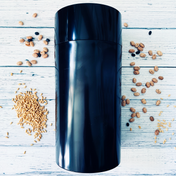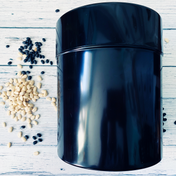FiltersFilter & Sort
Marigold - Crackerjack Mix Flowers
From $499 USDUnit price /UnavailableDescription

- Crackerjack Marigold flowers are big, bright, bold, and beautiful
- Most popular for attracting butterflies, bees, and other beneficial pollinators
- Crackerjack is easy to grow and will grow all summer
- Great for cut flowers and floral arrangements
- Drought tolerant
- Estimated Mature Height is appx. 36" tall.
- Crackerjack Marigold flowers are big, bright, bold, and beautiful
- From $499 USDUnit price /Unavailable
Description

-
Has an Oregano-like flavor. It can be used in many dishes including meats, stews, casseroles, poultry, sausages, and sauces
- Can be used dried or fresh. Great flavor and taste
- Marjoram is also known for its healing properties with rheumatoid pain, tension headaches and minor digestive problems
- It can be used in potpourri or added to sachets for linen and clothing cupboards
- Easy to grow in a small container
-
Days to Maturity | 90 days
-
Has an Oregano-like flavor. It can be used in many dishes including meats, stews, casseroles, poultry, sausages, and sauces
- From $499 USDUnit price /Unavailable
Description

- One of the most popular Oregano varieties. Use fresh or dried in sauces and soups - or any culinary creation
- Days to Maturity | 90 days
Additional DetailsHippocrates used oregano as an antiseptic, as well as a cure for stomach and respiratory ailments. It is still used today in Greece as a palliative for sore throat. Oregano is also high in antioxidant activity, due to a high content of phenolic acids and flavonoids.
- One of the most popular Oregano varieties. Use fresh or dried in sauces and soups - or any culinary creation
- From $499 USDUnit price /Unavailable
Description

- Perennial
- Hardy plant with pungent, oval leaves and purplish pink flowers
- Use fresh or dried in sauces and soups
-
Days to Maturity | 90 days
Additional Details
Hippocrates used oregano as an antiseptic, as well as a cure for stomach and respiratory ailments. It is still used today in Greece as a palliative for sore throat. Oregano is also high in antioxidant activity, due to a high content of phenolic acids and flavonoids.
- From $499 USDUnit price /Unavailable
Description
View all rosemary seeds
- Excellent flavor - extremely fragrant.
- Perfect to use fresh or dried.
- Can be used to flavor many culinary varieties such as meats, soups, and sauces.
- Can be used for treating headaches and known to improve circulation.
- Perfect for containers.
- Plant Height: 36"
- Perennial.
- Day to Maturity | 80-90 days
- From $499 USDUnit price /Unavailable
Description

- Sage is an aromatic perennial plant that is actually part of the mint family. The plant produces grayish-green leaves that are used in many popular food dishes, most notably in the preparation of sausages
- Natural mosquito repellent
- The leaves can also be used as a digestive and nerve tonic
- Excellent as a border plant around the garden
- Grows well in containers
- Easy to grow from seed and can be sowed directly in the garden
- Days to Maturity | 75 days
Follow SeedsNow.com's board Sage on Pinterest. - Sage is an aromatic perennial plant that is actually part of the mint family. The plant produces grayish-green leaves that are used in many popular food dishes, most notably in the preparation of sausages
- From $499 USDUnit price /Unavailable
Description

- The Summer Savory plant grows tasty peppery flavored leaves
- This is the herb to use if you want to flavor beans, cabbage, peas, and any other dishes
- Widely used as a medicinal herb for curing sore throats
- Use the leaves to make some tea and you'll be feeling great
-
Days to Maturity | 65 days
- The Summer Savory plant grows tasty peppery flavored leaves
- From $499 USDUnit price /Unavailable
Description

- Tarragon, aka Dragon Wort, is a popular herb widely recognized for its strong aroma and many culinary uses.
- A native herb of Europe
- Used to compliment to many classic continental – mostly French – dishes
- Tarragon seeds should be planted in a warm and sunny spot
- Grows well in containers
- Tarragon is perfect for seasoning chicken, fish, and egg dishes
- Days to Maturity | 85 days
- Tarragon, aka Dragon Wort, is a popular herb widely recognized for its strong aroma and many culinary uses.
- From $499 USDUnit price /Unavailable
Description

- Plant spreads to form attractive 8 to 12 inch high mounds
- Aromatic and flavorful leaves
- Used to flavor meats, dressings, soups, and stews
- Days to Maturity | 80 days
Additional DetailsBefore the advent of modern antibiotics, Thyme was used to medicate bandages. It has also been shown to be effective against the fungus that commonly infects toenails. It can also be found as the active ingredient in all-natural, alcohol-free hand sanitizers.
- Plant spreads to form attractive 8 to 12 inch high mounds
- From $499 USDUnit price /Unavailable
Description
- Wormwood is a very bitter plant with a long history of use as a medicinal herb
- Acts as a natural wasp repellant - many people plant wormwood as a garden border
- It is valued especially for its tonic effect on the liver, gallbladder and digestive system
- It is an extremely useful medicine for those with weak and under-active digestion
- It is known to increase stomach acid and bile production, improving digestion along with the absorption of nutrients
- Days to Maturity | 65 days
Additional DetailsWormwood also eases wind and bloating and, if taken regularly, helps the body return to full vitality after a prolonged illness. Use with caution, the plant should be taken internally in small doses for short-term treatment only, preferably under the supervision of a qualified practitioner. It should not be prescribed for children or pregnant women.
- Wormwood is a very bitter plant with a long history of use as a medicinal herb
- From $499 USDUnit price /Unavailable
Description

Yarrow, Medicinal Herb (100% Heirloom/Non-Hybrid/Non-GMO)- Yarrow has a high reputation and is widely employed in herbal medicine, administered both internally and externally. It is used in the treatment of a very wide range of disorders but is particularly valuable for treating wounds, stopping the flow of blood, treating colds, fevers, kidney diseases, menstrual pain etc.
-
Day to Maturity | 65 days
- From $499 USDUnit price /Unavailable
- From $499 USDUnit price /Unavailable
Description

- Spearmint ( Mentha spicata) is typically used in teas, jellies, deserts, and salads
- Extremely fragrant
- Sweet smelling
- Acts as a natural wasp repellant
- Perennial
- Can be used as a garnish on ice cream and drinks
- 85 days to maturity

Click here to see 7 Awesome Mint Drink Recipes HERE
Follow SeedsNow.com's board Mint on Pinterest.
Sunflower, Sun Gold/Sunspot (Dwarf) Flowers
From $499 USDUnit price /UnavailableDescription

- This dwarf Sunflower that grows to a max. of 24" tall
- It is an all-time favorite of home gardeners who love sunflowers without the usual massive plant height of other sunflowers
- Semi-drought and heat tolerant
- Grows best during mid-summer through fall
- Easy to grow
- This dwarf Sunflower that grows to a max. of 24" tall
- From $499 USDUnit price /Unavailable
Description
Lemon Basil, also called Hoary Basil (for its fuzzy stems), is a hybrid cross between traditional basil and lime basil.The bright green leaves have a sweet lemony aroma and a tangy lemon-anise flavor that’s best used fresh in seafood dishes, fruit salads, lemonade, cocktails, and salad dressings. Add at the end of cooking to preserve the citrus flavor, then garnish with the edible flowers.
Harvest the leaves and stems from the top part of the plant, and pinch off edible flower buds as they appear, which prevents the leaves from turning bitter, and signals the plant to branch out and grow more leaves, making a bushier plant.
The more you harvest, the more it grows!
- Tangy lemon-anise flavor
- Culinary and medicinal
- Good for indoor gardens
- Good for containers
- Tons of medicinal benefits!
As a medicinal herb, Basil has been used internally to treat anxiety, colds, colic, cough, depression, diarrhea, fever, flatulence, flu, indigestion, insomnia, intestinal parasites and worms, exhaustion, gastric pain, gonorrhea, lactation problems, migraine headache, nausea, stomach cramps, sore throat, and vomiting, and externally to treat acne, insect bites and stings, loss of smell, skin problems, snake bites.
⚠️ Do not use medicinally while pregnant.
⚠️ Medicinal properties are presented as information only, and are not a recommendation or prescription for use. Consult a medical professional before using any herb medicinally.
As a companion plant, Basil attracts hummingbirds, pollinators, and beneficial insects, and repels asparagus beetles, cabbage moths, cabbage white butterfly, cabbage worms, carrot rust fly, flies, maggots, mice, mosquitoes, spider mites, thrips, and tomato hornworms.
Shop all Basil Seeds Shop Good Companion Plants for Basil 📚 Grow Guide: Basil
Health Benefits of Lemon Basil
Basil is a known health tonic for expecting mothers and when mixed with tea it increases lactation in mothers. It is also a nerve tonic and young children are sometimes encouraged to chew on the leaves of basil because it stimulates brain cells and can increase memory.

See Basil Recipes & Growing Tips on our Pinterest Board
Shop all Basil Seeds Shop Good Companion Plants for Basil 📚 Grow Guide: Basil - From $499 USDUnit price /Unavailable
Description
Let us tell you about Lettuce Leaf Basil. It’s a lovely Italian basil that grows huge leaves as big as your hand, with a flavor that’s sweeter and less spicy than other basils. Its crinkles hold onto dressing in salads, you need only one leaf for a sandwich or wrap, and you can use the rest as you would any other basil. Save the edible flower spikes to garnish seafood dishes and cocktails.Harvest the leaves and stems from the top part of the plant, and pinch off edible flower buds as they appear, which prevents the leaves from turning bitter, and signals the plant to branch out and grow more leaves, making a bushier plant. The more you harvest, the more it grows!
- Sweet and mild
- Huge 5"-6" leaves
- Grows 1'-2' tall
- Good for containers
- Tons of medicinal benefits!
As a medicinal herb, Basil has been used internally to treat anxiety, colds, colic, cough, depression, diarrhea, fever, flatulence, flu, indigestion, insomnia, intestinal parasites and worms, exhaustion, gastric pain, gonorrhea, lactation problems, migraine headache, nausea, stomach cramps, sore throat, and vomiting, and externally to treat acne, insect bites and stings, loss of smell, skin problems, snake bites.
⚠️ Do not use medicinally while pregnant.
⚠️ Medicinal properties are presented as information only, and are not a recommendation or prescription for use. Consult a medical professional before using any herb medicinally.
As a companion plant, Basil attracts hummingbirds, pollinators, and beneficial insects, and repels asparagus beetles, cabbage moths, cabbage white butterfly, cabbage worms, carrot rust fly, flies, maggots, mice, mosquitoes, spider mites, thrips, and tomato hornworms.
Shop all Basil Seeds Shop Good Companion Plants for Basil 📚 Grow Guide: Basil
Health Benefits of Genovese Basil
Basil is a known health tonic for expecting mothers and when mixed with tea it increases lactation in mothers. It is also a nerve tonic and young children are sometimes encouraged to chew on the leaves of basil because it stimulates brain cells and can increase memory.

See Basil Recipes & Growing Tips on our Pinterest Board
Shop all Basil Seeds Shop Good Companion Plants for Basil 📚 Grow Guide: Basil - From $499 USDUnit price /Unavailable
Description
- Annual plant
- Adds great flavor and color to many culinary creations
- 3 ft. plant with strongly aromatic foliage, stems, and heads
- Excellent for fresh pickling
-
Days to Maturity | 40 - 65 days
Additional Details
Dill has a very long history of herbal use going back more than 2,000 years. The seeds are a common and very effective household remedy for a wide range of digestive problems. An infusion is especially efficacious in treating gripe in babies and flatulence in young children. The seed is aromatic, carminative, mildly diuretic, galactogogue, stimulant and stomachic.
Other Medicinal Properties
Dill is also used in the form of an extracted essential oil. Used either in an infusion, or by eating the seed whole, the essential oil in the seed relieves intestinal spasms and griping, helping to settle colic. Chewing the seed improves bad breath. Dill is also a useful addition to cough, cold and flu remedies, it can be used with antispasmodics such as Viburnum opulus to relieve period pains. Dill will also help to increase the flow of milk in nursing mothers and will then be taken by the baby in the milk to help prevent colic.
See Dill Recipes & Growing Tips on our Pinterest Board
Follow SeedsNow.com's board Dill on Pinterest. - From $499 USDUnit price /Unavailable
Description
- Sparky Marigold flowers are bright, bold, and beautiful
- Colors range from orange, red, and yellow
- Grows only 12" - 14" tall
- Most popular for attracting butterflies, bees, and other beneficial pollinators
- Sparky is easy to grow and will grow all summer
- Great for cut flowers and floral arrangements
- Sparky Marigold flowers are bright, bold, and beautiful
Spotted Bee Balm, Wild Bergamot Flowers
From $499 USDUnit price /UnavailableDescription

- The Spotted Bee Balm plant produces a beautiful plant with purple spotted flowers known to attract bees and other beneficial garden pollinators
- Common names: bee balm, horsemint, oswego tea, and wild bergamot
- Smell is similar to Thyme
- Has been used in teas and for other medicinal purposes
- This plant is drought tolerant. Grows well in dry conditions, requiring little water to grow
- Can grow up to 40" tall
- Perennial
- The Spotted Bee Balm plant produces a beautiful plant with purple spotted flowers known to attract bees and other beneficial garden pollinators
- From $499 USDUnit price /Unavailable
Description
Hybrid

Mint, Peppermint- Peppermint is typically used in teas, jellies, deserts, and salads.
- Extremely fragrant.
- Sweet smelling.
- Acts as a natural wasp repellant.
- Perennial.
- Can be used as a garnish on ice cream and drinks.

Click here to see 7 Awesome Mint Drink Recipes HERE
Follow SeedsNow.com's board Mint on Pinterest.
- Peppermint is typically used in teas, jellies, deserts, and salads.
Sunflower, Chocolate Cherry Flowers
From $499 USDUnit price /UnavailableDescription
Sweet Woodruff (Sweet-Scented Bedstraw)
From $499 USDUnit price /UnavailableDescription
Sweet Woodruff, also called Sweet-Scented Bedstraw, is a fast-growing, mat-forming herb and ground cover with dark green leaves and small, white, waxy, star-shaped flowers that bloom in spring. When crushed or cut, and especially dried, it has a grassy vanilla fragrance. Prefers partial to full shade, even under a Black Walnut tree. Add the leaves to fruit salads, jellies, and herbal teas, and use the flowers as an adorable and edible garnish. Reseeding and shallow runner roots enable it to spread easily.
- Grassy vanilla fragrance
- Culinary and medicinal
- Can be invasive
- Attracts bees, butterflies, and other pollinators
As a companion plant, it attracts all sorts of friendly pollinators to the garden.
As a medicinal herb, Sweet Woodruff has been used internally to treat congestion, insomnia, migraine headaches, nerve pain, and water retention, and externally to treat burns, wounds, and swelling.
⚠️ Contains naturally occurring coumarin and should not be ingested in large quantities if you are taking medication for circulatory disorders or are pregnant.
⚠️ Medicinal properties are presented as information only, and are not a recommendation or prescription for use. Consult a medical professional before using any herb medicinally.
SEED PLANTING TIPS
- Botanical name: Galium odoratum
- Life cycle: Herbaceous perennial
- Hardiness zones: 4-8
- Planting season: Spring, fall, winter
- Days to maturity: 90-120 days
- Depth to plant seeds: 1/4" deep
- Days to germinate (sprout): 10-200 days
- Germination soil temps: 60F-70F
- Spacing between plants: 8"-12" apart
- Spacing between rows: 18"-24" apart
- # of plants per sq. ft.: Appx. 1 plant per sq. ft.
- Soil types: Clay, sandy, loamy, rich, moist, well-drained
- Soil pH: 4.3-8.3
- Sun needs: Full shade, part shade
- Water needs: Average
- Cold stratify: Yes
- Frost tolerant: Yes
- Heat tolerant: No
- Drought tolerant: No
- Deer resistant: Yes
- Culinary use: Yes
- Medicinal use: Yes
Shiso, Green (Perilla Leaf, Japanese Basil)
From $499 USDUnit price /UnavailableDescription
Green Shiso (Perilla frutescens), also called Perilla Leaf and Japanese Basil, is an herb in the mint family with large, bright green, wrinkled, serrated leaves. Not as spicy as Red Shiso. Used extensively in Japanese cuisine, it has a fresh minty-basil flavor with notes of clove and cumin, and a bitter, astringent finish. Pairs well with fish, rice, noodles, and vegetables, especially cucumbers. Also a medicinal herb with antioxidant, anti-bacterial, anti-inflammatory, and antiseptic properties. Its rhizome root can become invasive, so best grown in a container.
- Mint-basil-clove-cumin flavor
- Full sun
- Days to germinate (sprout): 7-21 days
- Days to maturity: 80-85 days
Good companion plants: Arugula, Basil, Bok Choy, Parsley, Tomato
Shiso, Red (Perilla Leaf, Japanese Basil)
From $499 USDUnit price /UnavailableDescription
Red Shiso (Perilla frutescens), also called Perilla Leaf and Japanese Basil, is an herb in the mint family with large, deep purple, wrinkled, serrated leaves. Much stronger and spicier than Green Shiso, the crunchy leaves are used mainly in salads, for pickling, and as a natural food coloring. Used extensively in Japanese cuisine, it has a fresh minty-basil flavor with notes of clove and cumin, and a bitter, astringent finish. Pairs well with fish, rice, noodles, and vegetables, especially cucumbers. Also a medicinal herb with antioxidant, anti-bacterial, anti-inflammatory, and antiseptic properties. Its rhizome root can become invasive, so best grown in a container.
- Mint-basil-clove-cumin flavor
- Full sun
- Days to germinate (sprout): 7-21 days
- Days to maturity: 80-85 days
Good companion plants: Arugula, Basil, Bok Choy, Parsley, Tomato
Sunflower, Velvet Queen Flowers
From $499 USDUnit price /UnavailableDescription
The Velvet Queen Sunflower (Helianthus annuus) is a striking annual plant known for its vibrant, deep red to burgundy petals and dark centers. This variety is not only visually appealing but also serves as a valuable addition to any garden, attracting pollinators such as bees and butterflies. Understanding the optimal conditions and care required for growing Velvet Queen Sunflowers can enhance your gardening experience and yield impressive results.
To begin, it is essential to select an appropriate location for planting. Velvet Queen Sunflowers thrive in full sun, requiring at least six to eight hours of direct sunlight each day. The soil should be well-draining, rich in organic matter, and have a pH level between 6.0 and 7.5. A soil test can provide valuable insights into nutrient levels and pH, allowing for necessary amendments before planting.
Planting should occur after the last frost date in your area, as these sunflowers are sensitive to cold temperatures. Seeds can be sown directly into the garden bed or started indoors and transplanted later. When sowing seeds, plant them approximately 1 inch deep and spaced 12 to 18 inches apart to allow for adequate growth. If starting indoors, transplant seedlings when they are about 6 inches tall and have developed a few sets of true leaves.
Discover the beauty of Sunflower Velvet Queen Flowers in your garden. With its vibrant colors and easy-to-grow nature, you can enjoy 100% success rate in a variety of climates. Perfect for adding a touch of cheer and elegance to any outdoor space.
- From $499 USDUnit price /Unavailable
Description
The Lavender Vera plant, scientifically known as Lavandula angustifolia, is a perennial herb renowned for its aromatic qualities and vibrant purple flowers. This plant is native to the Mediterranean region and has been cultivated for centuries due to its numerous benefits and applications in gardening, aromatherapy, and culinary arts.
One of the primary advantages of incorporating Lavender Vera into a garden is its ability to attract pollinators. Studies indicate that lavender can attract up to 30% more bees and butterflies compared to other flowering plants. This is particularly beneficial for gardeners aiming to enhance biodiversity and support local ecosystems.
Lavender Vera is also known for its drought-resistant properties. Once established, this plant requires minimal water, making it an excellent choice for sustainable gardening practices. Research shows that lavender can thrive in well-drained soils with low moisture levels, which can reduce the overall water consumption in a garden by approximately 20%.
In addition to its ecological benefits, Lavender Vera has a variety of uses in the home. The essential oils extracted from its flowers are widely used in aromatherapy for their calming effects. According to a study published in the Journal of Alternative and Complementary Medicine, inhaling lavender oil can reduce anxiety levels by up to 30% in individuals experiencing stress.
From a culinary perspective, Lavender Vera can be utilized in various recipes, including desserts, teas, and savory dishes. Its unique flavor profile adds a distinct floral note that can enhance the overall taste of a dish. However, it is essential to use culinary-grade lavender to ensure safety and palatability.
When cultivating Lavender Vera, it is crucial to consider its growing conditions. This plant thrives in full sun and well-drained soil, with a pH level between 6.5 and 7.5. Proper spacing is also vital, as mature plants can reach heights of 2 to 3 feet and spread up to 4 feet wide. Adequate air circulation around the plants can help prevent fungal diseases, which are common in humid environments.
In conclusion, the Lavender Vera plant is a valuable addition to any garden. Its ability to attract pollinators, drought-resistant nature, and versatile applications make it an ideal choice for both novice and experienced gardeners. By understanding the specific needs and benefits of Lavender Vera, gardeners can create a thriving and sustainable environment that enhances both aesthetics and functionality.
Follow SeedsNow.com's board Lavendar on Pinterest. All-in-One Culinary Herb Garden Seed Bank
$8999 USDUnit price /UnavailableDescription
The Culinary Herb Seed Bank includes everything you need to start growing your own herbs for cooking in the kitchen. It includes 12 of our most popular culinary seed varieties and everything you need to start growing them.
What's Included:
-
12 seed varieties (scroll down to view all the varieties that are included in this seed bank)
- 25 Seed starting pellets (the easiest way to start your seeds)
- Seeds are all individually packaged and labeled in resealable bags and then secured in a Mylar bag (provides two layers of protection from moisture and light)

1. Chives (appx. 1,000 seeds)
Narrow, grass-like leaves have mild onion-like flavor.
Learn more
2. Cilantro (Coriander) - Slow Bolt (appx. 490 seeds)
This slow-bolting strain is grown primarily for its broad, deep green, celery-like, pungent foliage. Used in Oriental and Mexican cuisine. Use seed to flavor meats, pickles and baked goods.
Learn more
3. Cumin (appx. 1,000 seeds)
The Cumin seeds have widely been used to flavor rice, breads, beans, meats, and other dishes. Often used to flavor Curry Powder.
Learn more
4. Dill - Bouquet (appx. 450 seeds)
Annual. 3 ft. plant with strongly aromatic foliage, stems, and heads. Excellent for pickling.
Learn more
5. Fennel (appx. 1,000 seeds)
Produces very flavorful large bulbs and edible flower buds. Excellent for seasonings and for cooking as a vegetable. - Plant Height: 30" tall. Fennel is a very aromatic plant with a sweet licorice flavor, similar to an anise seed. Fennel has a long history of herbal use and is a commonly used household remedy, being useful in the treatment of a variety of complaints, especially those of the digestive system. Easy to grow. Many health benefits associated with this plant (see video below)
Learn more

6. Lemon Mint (appx. 230 seeds)
Lemon scented leaves that can be used as a replacement for lemon in any dish or tea. Put mint leaves in the body of a chicken before cooking - adds excellent flavor and aroma. Excellent for poultry, lamb & pork stuffing. Makes a great marinade for fish too! Great for vinaigrette dressings. Lemon mint can be used many different ways in any culinary creations.
Learn more
7. Oregano - Italian (appx. 1,000 seeds)
Hardy 2 ½ inch plant with pungent, oval leaves and purplish pink flowers. Use fresh or dried in sauces and soups.
Learn more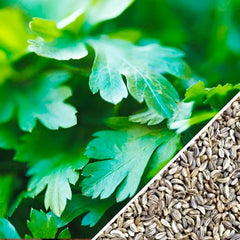
8. Parsley - Dark Green Italian Giant (appx. 550 seeds)
Finely cut dark green parsley. Use this parsley for garnishing, and culinary decoration. Good heat tolerance.
Learn more
9. Rosemary (Appx. 100 seeds)
Excellent flavor - extremely fragrant. Perfect to use fresh or dried. Can be used to flavor many culinary varieties such as meats, soups, and sauces. Can be used for treating headaches and known to improve circulation. Perfect for containers.
Learn more
10. Summer Savory (appx. 1,000 seeds)
The Summer Savory plant grows tasty peppery flavored leaves. This is the herb to use if you want to flavor beans, cabbage, peas, and many other dishes.
Learn more
11. Tarragon (appx. 1,000 seeds)
Tarragon, aka Dragon Wort, is a popular herb widely recognized for its strong aroma and many culinary uses. A native herb of Europe. Used to compliment to many classic continental – mostly French – dishes.
Learn more
12. Basil - Italian Large Leaf (appx. 1000 seeds)
The Italian Large Leaf Basil plant will produce medium to large leaves that can measure up to 4" long! It is of heriloom variety and is extremely fragrant and used widely in the culinary industry. If you're a lover of basil, this would be a good variety to plant in your garden.
Learn moreWhat is a Seed Bank?
The answer is simple: a seed bank is your very own supply of open-pollinated, non-hybridized, NON-GMO seeds to be kept on hand in the case of an emergency or the unavailability of seeds.
There are many reasons to invest in a seed bank. Whether the market has changed or famine and war have changed the way we get access to seeds, these banks represent a secure way to begin planting quality foods.
All our seeds offer you the chance to replant the seeds after a successful harvest, making your investment in food one of the best values you will find. All of our seeds will produce organic produce when properly cared for.
While we remain optimistic about the future, we feel it is best to control your own food supply and live a healthier lifestyle with the best non-hybrid, non GMO seeds available today!-
12 seed varieties (scroll down to view all the varieties that are included in this seed bank)
All-in-One Medicinal Herb Garden Seed Bank
$9999 USDUnit price /UnavailableDescription
Start a Medicinal Herb Garden
Grow natural medicinal remediesThe Herbal Medicine Seed Bank, a one-of-a-kind package designed to get you started growing herbs to cure illnesses the natural way. Can something be said for a sustainable lifestyle that involves curing with nature’s remedies? According to many doctors and scientists, the healing properties of herbs often surpass the performance of chemically produced drugs.
The Herbal Medicine Seed Bank makes a great addition to your food storage/survival-prep. It is designed to give you everything you need to start living off the land and growing your own herbal remedies. Use the seeds this year or store them for an emergency.
⚠️ Always seek advice from a professional before growing and/or consuming seeds and/or plants for medicinal purposes.
What's included:- 20 seed varieties
-
25 EXPANDING SEED STARTING SOIL PODS
- Seeds are individually packaged and labeled in resealable bags and then secured in a Mylar bag, which provides two layers of protection from moisture and light.
1. Anise
- Seed Count | Appx. 350 seeds
- Days to Maturity | 70 days
- Medicinal Properties | Digestive-aid, anti-flatulence agent, fights coughs and colds. Anise has a long history of medicinal use. It is still used all over the world as a digestive-aid and anti-flatulence agent. Anise has also been used for centuries relieve coughs and colds. In fact, scientists have even proven that the essential oils in the Anise seeds DO have expectorant properties. Anise can be used as a tea or syrup to aid in the relief from cough and congestion. Try a simple tea made from crushed seeds after a large meal - you will be surprised at how effective it can be.
2. Basil, Herb Mix
- Seed Count | Appx. 1,000 seeds
- Days to Maturity | 75 days
- Medicinal Properties | Basil has been used for thousands of years as a culinary and medicinal herb. It acts principally on the digestive and nervous systems, easing flatulence, stomach cramps, colic and indigestion. Basil also contains large amounts of (E)-beta-caryophyllene (BCP), which may have a use in treating inflammatory bowel diseases and arthritis.
3. Borage
- Seed Count | Appx. 300 seeds
- Days to Maturity | 80 days
- Medicinal Properties | Borage is a fairly common domestic herbal remedy that has been used since ancient times. It has a particularly good reputation for its beneficial affect on the mind, being used to dispel melancholy and induce euphoria. It is a soothing saline, diuretic herb that soothes damaged or irritated tissues. The leaves, and to a lesser extent the flowers, are demulcent, diaphoretic, depurative, mildly diuretic, emollient, expectorant, febrifuge, lenitive and mildly.
4. Mugwort
- Seed Count | Appx. 500 seeds
- Days to Maturity | 85 days
- Medicinal Properties | 85 days.
Artemisia vulgaris. Perennial. Plant produces beautiful fragrant leaves. Used to make tea to treat menstrual and menopausal problem. Stimulates and improves memory. Easy to grow.
5. Saponaria AKA Soapwort
- Seed Count | Appx. 175 seeds
-
Medicinal Properties |
6. Chamomile, German
- Seed Count | Appx. 1,700 seeds
- Days to Maturity | 90 days
- Medicinal Properties | Chamomile is sometimes known as "the plant doctor", because it is thought to help the growth and health of many other plants, especially ones that produce essential oils. It is thought to increase production of those oils, making certain herbs, like mints (spearmint, sage, oregano) and basil stronger in scent and flavour. These plants are best known for their ability to be made into a tea which is commonly used to help with sleep and is often served with either honey or lemon.
7. Chervil
- Seed Count | Appx. 450 seeds
- Days to Maturity | 90 days
- Medicinal Properties | Chervil has various traditional uses. Pregnant women were bathed in an infusion of it; a lotion of it was used as a skin cleanser; and it was used medicinally as a blood purifier. It was also claimed to be useful as a digestive aid, for lowering high blood pressure, and, infused with vinegar, for curing hiccups.
8. Coriander (Cilantro)
- Seed Count | Appx. 490 seeds
- Days to Maturity | 120 days
- Medicinal Properties | Coriander contains antioxidants. It has also been used as a folk medicine for the relief of anxiety and insomnia. Coriander has also been documented as a traditional treatment for diabetes.
9. Dill, Boquet
- Seed Count | Appx. 450 seeds
- Days to Maturity | 70 days
- Medicinal Properties | Dill has a very long history of herbal use going back more than 2,000 years. The seeds are a common and very effective household remedy for a wide range of digestive problems. An infusion is especially efficacious in treating gripe in babies and flatulence in young children. The seed is aromatic, carminative, mildly diuretic, galactogogue, stimulant and stomachic. It is also used in the form of an extracted essential oil. Used either in an infusion, or by eating the seed whole, the essential oil in the seed relieves intestinal spasms and griping, helping to settle colic. Chewing the seed improves bad breath. Dill is also a useful addition to cough, cold and flu remedies, it can be used with antispasmodics such as Viburnum opulus to relieve period pains. Dill will also help to increase the flow of milk in nursing mothers and will then be taken by the baby in the milk to help prevent colic
10. Fennel
- Seed Count | Appx. 1,000 seeds
- Days to Maturity | 85 days
- Medicinal Properties | Fennel has a long history of herbal use and is a commonly used household remedy, being useful in the treatment of a variety of complaints, especially those of the digestive system. The seeds, leaves and roots can be used, but the seeds are most active medicinally and are the part normally used. An essential oil is often extracted from the fully ripened and dried seed for medicinal use, though it should not be given to pregnant women. An infusion is used in the treatment of indigestion, abdominal distension, stomach pains etc. It helps in the treatment of kidney stones and, when combined with a urinary disinfectant like Arctostaphylos uva-ursi, makes an effective treatment for cystitis.
11. Lavender
- Seed Count | Appx. 300 seeds
- Days to Maturity | 85 days
- Medicinal Properties | Lavandula angustifolia. English Lavender is one of the most beautiful seeds you can plant in your garden. Lavender is an herb. The flower and the oil of lavender are used to make medicine. Lavender is used for restlessness, insomnia, nervousness, and depression. It is also used for a variety of digestive complaints, loss of appetite, vomiting, nausea, intestinal gas, and upset stomach. Some people use lavender for painful conditions including migraine headaches, toothaches, sprains, nerve pain, sores, and joint pain. It is also used for acne and cancer, and to promote menstruation. Lavender is applied to the skin for hair loss, and pain, and to repel mosquitoes and other insects. Some people add lavender to bathwater to treat circulation disorders and improve mental well being. By inhalation, lavender is used as aromatherapy for insomnia, pain, and agitation related to dementia. In foods and beverages, lavender is used as a flavor component.
12. Lemon, Mint
- Seed Count | Appx. 230 seeds
- Days to Maturity | 90 days
- Medicinal Properties | Annual plant that is covered with beautiful pinkish purple colored flowers. Lemon scented leaves that can be used as a replacement for lemon in any dish or tea. Plant grows to about 18" tall. These flowers are also great at attracting bees and hummingbirds - perfect for pollinating the other plants in your garden! In skin care, Lemon Mint leaves can be rubbed directly on the skin to fight off mosquitoes. The dried leaves can also be infused in oil made into lotions for soothing the skin.
13. Oregano - Italian
- Seed Count | Appx. 1,000 seeds
- Days to Maturity | 90 days
- Medicinal Properties | Hardy 2 ½ inch plant with pungent, oval leaves and purplish pink flowers. Use fresh or dried in sauces and soups.
Hippocrates used oregano as an antiseptic, as well as a cure for stomach and respiratory ailments. It is still used today in Greece as a palliative for sore throat. Oregano is also high in antioxidant activity, due to a high content of phenolic acids and flavonoids.
14. Parsley - Flat Leaf
- Seed Count | Appx. 550 seeds
- Days to Maturity | 75 days
- Medicinal Properties | Parsley is a commonly grown culinary and medicinal herb that is often used as a domestic medicine. The fresh leaves are highly nutritious and can be considered a natural vitamin and mineral supplement in their own right. The plants prime use is as a diuretic where it is effective in ridding the body of stones and in treating jaundice, dropsy, cystitis etc. It is also a good detoxifier, helping the body to get rid of toxins via the urine and therefore helping in the treatment of a wide range of diseases such as rheumatism.
15. Pepper, Cayenne
- Seed Count | Appx. 145 seeds
- Days to Maturity | 70 days
- Medicinal Properties | Cayenne pepper is known to help with high blood pressure. It is also known to clean the arteries and helps get rid of the bad LDL cholesterol and triglycerides. Cayenne is also extremely useful in alleviating allergies, muscle cramp, improving digestion, gives more pep and energy, and helps wound healing with minimal scar tissue.
16. Black Root (Scorzonera) - Appx. 500 seeds
17. Summer Savory
- Seed Count | Appx. 1,000 seeds
- Days to Maturity | 85 days
- Medicinal Properties | The Summer Savory plant grows tasty peppery flavored leaves. This is the herb to use if you want to flavor beans, cabbage, peas, and any other dishes. Widely used as a medicinal herb for curing sore throats. Use the leaves to make some tea and you'll be feeling great!
18. Thyme
- Seed Count | Appx. 1,000 seeds
- Days to Maturity | 85 days
- Medicinal Properties | Before the advent of modern antibiotics, Thyme was used to medicate bandages. It has also been shown to be effective against the fungus that commonly infects toenails. It can also be found as the active ingredient in all-natural, alcohol-free hand sanitizers.
19. Wormwood
- Seed Count | Appx. 1,700 seeds
- Days to Maturity | 65 days
- Medicinal Properties | Wormwood is a very bitter plant with a long history of use as a medicinal herb. It is valued especially for its tonic effect on the liver, gallbladder and digestive system, and for its vermicidal activity. It is an extremely useful medicine for those with weak and under-active digestion. Wormwood increases stomach acid and bile production, improving digestion and the absorption of nutrients. It also eases wind and bloating and, if taken regularly, helps the body return to full vitality after a prolonged illness. Use with caution, the plant should be taken internally in small doses for short-term treatment only, preferably under the supervision of a qualified practitioner. It should not be used by children or pregnant women
20. Yarrow
- Seed Count | Appx. 730 seeds
- Days to Maturity | 95 days
- Medicinal Properties | Yarrow has a high reputation and is widely employed in herbal medicine, administered both internally and externally. It is used in the treatment of a very wide range of disorders but is particularly valuable for treating wounds, stopping the flow of blood, treating colds, fevers, kidney diseases, and menstrual pain.
What is a Seed Bank?The answer is simple: a seed bank is your very own supply of open-pollinated, non-hybridized, NON-GMO seeds to be kept on hand in the case of an emergency or the unavailability of seeds.
There are many reasons to invest in a seed bank. Whether the market has changed or famine and war have changed the way we get access to seeds, these banks represent a secure way to begin planting quality foods.
All our seeds offer you the chance to replant the seeds after a successful harvest, making your investment in food one of the best values you will find. All of our seeds will produce organic produce when properly cared for.
While we remain optimistic about the future, we feel it is best to control your own food supply and live a healthier lifestyle with the best non-hybrid, non GMO seeds available today!

⭐ FEATURED COLLECTIONS
View all seeds listed A-Zcontinue shopping
























